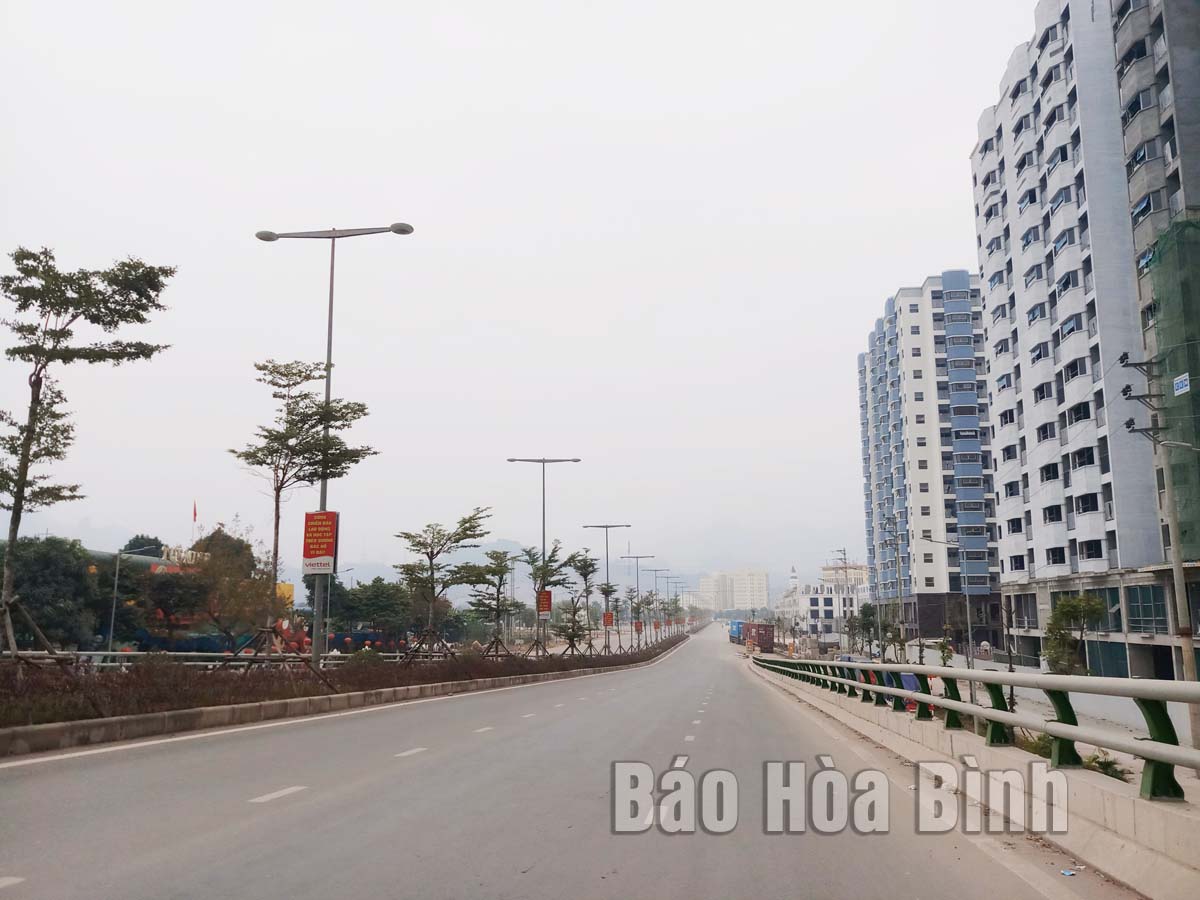
(HBO) – Hoa Binh City, Luong Son district and the northern part of Lac Thuy district have been set as urban, industrial and dynamic zone of Hoa Binh province.

Hoa Binh City’s transportation and urban
infrastructure basically meet development demand.
The provincial Party Committee and People’s
Committee directed effectively performing the Party and State’s policies and
guidelines on planning work, improving planning quality and management in line
with the law, and completing the provincial planning for the 2021-2030 period
with a vision to 2050.
Located in the dynamic zone, Hoa Binh City
considered it a favourable condition for development. Over the past years, the
city has attached importance to improving the efficiency of using, managing and
upholding resources of the economy, especially socio-economic infrastructure.
At present, the dynamic zone is home to almost
local industrial parks (IPs) and industrial park clusterswith 7 IPs, or
87.5 percent, and 10 IP clusters, or over 60 percent of the total in the
province. Luong Son IP and IP on the left bank of Da River have basically
completed technical infrastructure. Four IP clusters have been put into
operation. Among 635 valid projects in the province, Hoa Binh City accounted
for the most with 203 projects, followed by Luong Son with 198 projects and Lac
Thuy 64. As many as 92.5 percent of projects by forest investors are based in
the dynamic zone, mostly in the fields of processing, electronic spare parts,
construction materials, electricity and water production and distribution.
There are service and tourism projects like Phuong Hoang and Hilltop Valley
golf courses, Thang Thien waterfall tourism area, resorts and garden houses.
The urbanisation rates of Hoa Binh City, Luong
Son district and Lac Thuy district hit nearly 78 percent, 45 percent and 25.45
percent, respectively.
The province estimated that the dynamic zone
contributed about 70 percent of the local State budget revenue, over 90 percent
of export revenue and 70 percent of economic scale of the province. The zone
also recorded the highest income per capita and the lowest rate of poor
households. In Hoa Binh City alone, average income per capita reached 75
million VND in 2021 while the rate of poor households was reduced to 0.97
percent./.
According to data from the Hoa Binh Provincial Party Committee, the industrial production index for the first six months of 2025 is estimated to have increased by 20% compared to the same period last year. This marks the highest year-on-year growth rate for this period since 2020.
In the first six months of 2025, Hoa Binh province’s export turnover was estimated at 1.145 billion USD, marking an 18.11% increase compared to the same period in 2024. Import turnover was estimated at $ 804 million, a 17.15% increase, which helped the province maintain a positive trade balance.
The lives of the ethnic minority farmers in Tan Lac district have gradually improved thanks to the new directions in agricultural production. This is a testament to the collective strength fostered through the professional associations and groups implemented by various levels of the district’s Farmers’ Union.
With the motto the "product quality comes first,” after nearly one year of establishment and operation, Muong village’s Clean Food Agricultural and Commercial Cooperative, located in Cau Hamlet, Hung Son Commune (Kim Boi district), has launched reputable, high-quality agricultural products to the market that are well-received by consumers. The products such as Muong village’s pork sausage, salt-cured chicken, and salt-cured pork hocks have gradually carved out a place in the market and they are on the path to obtaining the OCOP certification.
In the past, the phrase "bumper harvest, rock-bottom prices" was a familiar refrain for Vietnamese farmers engaged in fragmented, small-scale agriculture. But today, a new spirit is emerging across rural areas of Hoa Binh province - one of collaboration, organisation, and collective economic models that provide a stable foundation for production.
Maintaining growing area codes and packing facility codes in accordance with regulations is a mandatory requirement for agricultural products to be eligible for export. Recently, the Department of Agriculture and Environment of Hoa Binh province has intensified technical supervision of designated farming areas and packing facilities to safeguard the "green passport" that enables its products to access international markets.



